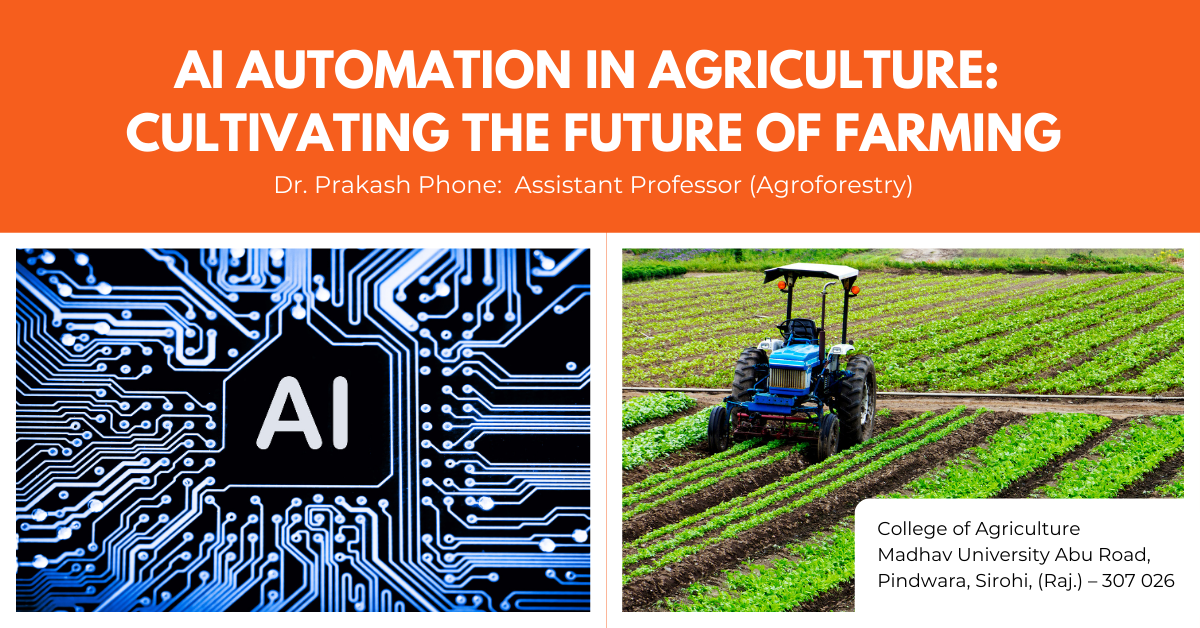Agriculture, the backbone of global food production, is undergoing a transformative shift thanks to artificial intelligence (AI) and automation. As the world grapples with increasing food demands, environmental challenges, and a changing climate, AI-driven innovations are emerging as crucial tools for modernizing agriculture. This blog explores how AI automation is reshaping the agricultural landscape and what the future holds for this vital industry.
The Role of AI Automation in Agriculture
AI automation in agriculture leverages advanced technologies to optimize farming practices, improve productivity, and address challenges ranging from resource management to pest control. Here’s how AI is making a difference:
- Precision Agriculture: AI-driven systems use data from satellite imagery, drones, and sensors to monitor crop health, soil conditions, and weather patterns. This data allows farmers to apply precise amounts of water, fertilizers, and pesticides, reducing waste and enhancing crop yields.
- Predictive Analytics: Machine learning algorithms analyze historical data and real-time information to predict crop performance, disease outbreaks, and weather impacts. These insights help farmers make informed decisions, from planting schedules to harvest timings, improving overall efficiency.
- Automated Machinery: Tractors, harvesters, and other farming equipment equipped with AI and robotics can perform tasks autonomously. These machines can plant, tend, and harvest crops with high precision, reducing labor costs and increasing productivity.
- Supply Chain Optimization: AI enhances the efficiency of the agricultural supply chain by predicting demand, optimizing logistics, and minimizing waste. Automated systems streamline the distribution of produce from farms to markets, ensuring fresher and more affordable food.
- Smart Irrigation Systems: AI-powered irrigation systems monitor soil moisture levels and weather forecasts to optimize water usage. This technology helps conserve water resources and ensures crops receive the right amount of hydration.
The Future of AI Automation in Agriculture
The future of AI automation in agriculture promises to bring even more transformative changes:
- Enhanced Crop Genetics: AI will advance the field of genomics, allowing for the development of crop varieties that are more resistant to pests, diseases, and climate extremes. This innovation will improve food security and sustainability.
- Autonomous Farms: The concept of fully autonomous farms, where AI-powered robots and systems manage all aspects of farming, is becoming more feasible. These farms will reduce the need for human labor while increasing efficiency and reducing operational costs.
- Integration with IoT: The Internet of Things (IoT) will integrate with AI to create smart farming ecosystems. Sensors embedded in soil, crops, and equipment will continuously provide data, allowing for real-time monitoring and adjustments.
- Sustainable Practices: AI will play a crucial role in promoting sustainable agriculture by optimizing resource use, reducing environmental impact, and supporting regenerative practices. Technologies will focus on minimizing the ecological footprint of farming activities.
- Global Collaboration: AI-driven agricultural solutions will facilitate global collaboration to address food security challenges. By sharing data and insights across regions, farmers and researchers can tackle issues like climate change and pest invasions more effectively.
Challenges and Considerations
While the potential of AI automation in agriculture is immense, several challenges need addressing:
- Data Privacy and Security: The extensive data collection involved in AI-driven agriculture raises concerns about privacy and security. Ensuring that data is protected and used responsibly will be crucial.
- Cost and Accessibility: The adoption of AI technologies can be expensive, particularly for small-scale farmers. Making these technologies affordable and accessible will be essential for widespread adoption.
- Skill Development: As AI becomes more integrated into farming, there will be a need for training and education to help farmers and agricultural workers adapt to new technologies.
- Ethical Implications: The use of AI in agriculture must be approached with ethical considerations, including the impact on labor markets and the environment. Developing frameworks to address these issues will be important.
Conclusion
AI automation is revolutionizing agriculture, offering innovative solutions to enhance productivity, sustainability, and efficiency. As we look to the future, embracing these technologies will be key to meeting the growing demands of global food production while addressing environmental and resource challenges. By navigating the associated challenges and investing in research and development, we can cultivate a future where agriculture thrives in harmony with technology and nature.
College of Agriculture Madhav University
Abu Road, Pindwara, Sirohi, (Raj.) – 307 026
Dr. Prakash Phone: +91 90016 08599 (M)
Assistant Professor (Agroforestry) E-mail: prakash@madhavuniversity.edu.in

